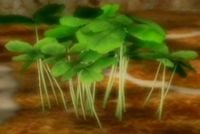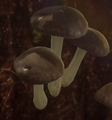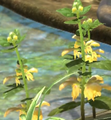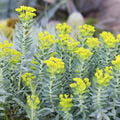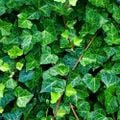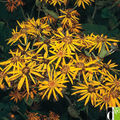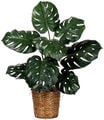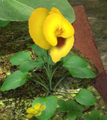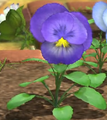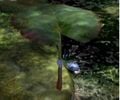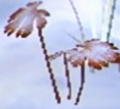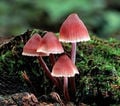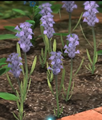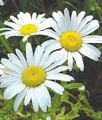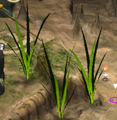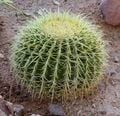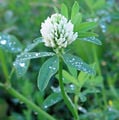Vegetation
- "Flower" redirects here. For the flower atop a Pikmin's head, see chaenostoma cordatum.
- This article is about vegetation in the canon games. For vegetation in Pikmin Adventure, see Pikmin Adventure vegetation.
PNF-404 is covered in all sorts of vegetation in addition to its animal wildlife. This includes an assortment of plants and fungi. Gameplay-wise, these can either be static background or area geometry elements, or they can be game objects that react to the world around them. For the most part, plants and fungi serve only an aesthetic purpose, but in some instances, they can directly contribute to the gameplay. With the Piklopedia in Pikmin 2, some plants and fungi were given a bit of importance inside the game itself, but because the explorers are not specialists in plant and fungus lifeforms familiar to humans, they mistakingly categorize things like LED lights as plants. In addition, Captain Olimar refers to Pikmin as being "both plant and animal".[1]
Vegetation as game objects
As stated above, some forms of vegetation are game objects, much like the leaders or the Pikmin. They are dotted about the terrain, and most of them have minimal impact on the gameplay, serving only for decoration; at most, they gently sway when brushed against. However, while some plants and fungi may be decorative in and of themselves, upon touching them they may release some helpful enemies hiding within, like Unmarked Spectralids, Honeywisps or Iridescent Flint Beetles. Others can also act as hiding spots from predators. Finally, there is a small handful of plant and fungus objects that have an important role as a gameplay mechanic.
Piklopedia
- Main article: Piklopedia.
The Piklopedia is an in-game feature in Pikmin 2. When the leaders interact with enemies and vegetation, a record about the entity is created on the Piklopedia. In order for the player to complete the Piklopedia, they must touch at least one specimen of every recognizable plant and fungus in the game.
Gameplay mechanics
Some forms of vegetation in PNF-404 are actually helpful or obstructive to the leaders and their Pikmin, and serve as important gameplay mechanics – some must be interacted with to complete the game.
 Pellet Posies have a single pellet on top of their stem. When the plant is taken down, it releases the pellet inside, which can be brought to an Onion. This provides a safe way of increase Pikmin population without having to interact with enemies or their corpses.
Pellet Posies have a single pellet on top of their stem. When the plant is taken down, it releases the pellet inside, which can be brought to an Onion. This provides a safe way of increase Pikmin population without having to interact with enemies or their corpses.
 Burgeoning Spiderworts contain berries that, when delivered to the Hocotate ship or S.S. Drake, can be used to brew sprays. These plants can generate several berries throughout the day, making them a good origin of sprays; they do, however, need some upkeep in order to remain a healthy and reliable source.
Burgeoning Spiderworts contain berries that, when delivered to the Hocotate ship or S.S. Drake, can be used to brew sprays. These plants can generate several berries throughout the day, making them a good origin of sprays; they do, however, need some upkeep in order to remain a healthy and reliable source.
 Burgeoning Spiderwort molds in Pikmin 2 suffocate Burgeoning Spiderworts and any Pellet Posies within their radii, rendering the plants inaccessible until the central molds are destroyed.
Burgeoning Spiderwort molds in Pikmin 2 suffocate Burgeoning Spiderworts and any Pellet Posies within their radii, rendering the plants inaccessible until the central molds are destroyed.
 Candypop Buds are plants that can take in Pikmin and convert them to a different type. White and Purple Pikmin can only be obtained via these plants.
Candypop Buds are plants that can take in Pikmin and convert them to a different type. White and Purple Pikmin can only be obtained via these plants.
- Nectar weed is a type of grass that, when pulled out, has a chance of releasing a drop of nectar. Pikmin can be told to weed out these blades of grass in order to obtain the nectar within.
- Common Glowcaps in Pikmin 3 light up the area around them. This provides both lighting and protection from Phosbats.
 Spotcaps are often simply destructible scenery, but sometimes they can block a pathway or even contain Data Files.
Spotcaps are often simply destructible scenery, but sometimes they can block a pathway or even contain Data Files.
 Kingcaps always appear in dense collections of Spotcaps, blocking a path until Pikmin destroy it.
Kingcaps always appear in dense collections of Spotcaps, blocking a path until Pikmin destroy it.
 Bloominous Stemples open up when lit, and serve as bridges to cross gaps.
Bloominous Stemples open up when lit, and serve as bridges to cross gaps.
 Bouncy Mushrooms launch any Pikmin or leaders to a specific spot nearby.
Bouncy Mushrooms launch any Pikmin or leaders to a specific spot nearby.
 Flukeweeds hold items in their roots; Winged Pikmin can pull them out to retrieve the items.
Flukeweeds hold items in their roots; Winged Pikmin can pull them out to retrieve the items.
 Lily pads float on the surface of rivers, and allow leaders and Pikmin to ride them to new sections of the area.
Lily pads float on the surface of rivers, and allow leaders and Pikmin to ride them to new sections of the area.
Treasures as vegetation
In Pikmin 2, the leaders attribute a high value to some otherwise mundane plants and fungi. These forms of vegetation have been upgraded from mere decorative objects to important treasures that the player must collect in order to complete the game. The following is a list of series whose treasures do not act as regular in-game vegetation:
Enemies as vegetation
Some enemies in the Pikmin world take advantage of the unassuming characteristics of flora and fungi in order to disguise themselves as common vegetation. This can be either a defensive or offensive mechanism, in that the disguise could serve as a way to hide from predators, or as a means for an ambush. In addition, some enemies also seem to be part plant or part fungus, much like the Pikmin are part plant themselves. A list of enemies with these plant and fungus connections is as follows:
 Bulbmin: as they are but a parasitic form of Pikmin, they too are half-plant in nature.
Bulbmin: as they are but a parasitic form of Pikmin, they too are half-plant in nature. Creeping Chrysanthemum: they belong to the same family of plants as the Margaret, and disguise themselves as one in order to ambush prey.
Creeping Chrysanthemum: they belong to the same family of plants as the Margaret, and disguise themselves as one in order to ambush prey. Skitter Leaf: these enemies disguise themselves as mere leaves in order to prevent predation.
Skitter Leaf: these enemies disguise themselves as mere leaves in order to prevent predation. Desiccated Skitter Leaf: same as Skitter Leaf.
Desiccated Skitter Leaf: same as Skitter Leaf. Puffstool: these mushroom-like enemies release spores that can take over Pikmin.
Puffstool: these mushroom-like enemies release spores that can take over Pikmin.
Vegetation as terrain
The terrain in PNF-404 consists of all sorts of surfaces. Given the series' highlights of nature, a large part of the terrain Pikmin and leaders walk on is made up of flora or fungi. This can range from grass to tree trunks. These different terrains count simply for decoration, as they have no impact on the gameplay, other than providing different footstep sounds when leaders walk on top of them.
Vegetation as background
In order to give the areas some physical context, the out-of-bounds sections of the terrain are filled with plants and fungi. At times, it is even in much larger amounts than what can be found in the area's in-bound terrain; the reason for this is to stop the gameplay section of the area to be too cluttered. The outside of maps can consist of normal vegetation gameplay objects, dedicated models (e.g. trees, leaves, or unique flowers), or, in the case of the first two games, a wall with a texture of assorted vegetation, like mossy stones or trees.
List of identified vegetation
The following is a list of identified plants and fungi in the Pikmin games. This list refers only to vegetation that is given an actual name or recognition inside the games or other canonical content. Only Pikmin 2 actually names most of these, with the Piklopedia. You may also browse the categories available on Pikipedia, with the top one being Vegetation.
Pikmin
- See also: [[::Category:Pikmin 1 vegetation|Pikmin vegetation category]].
Pikmin 2
- See also: [[::Category:Pikmin 2 vegetation|Pikmin 2 vegetation category]].
Pikmin 3
 Bloominous Stemple
Bloominous Stemple Bouncy Mushroom
Bouncy Mushroom- [icon] Burgeoning Spiderwort
 Clover
Clover Common Glowcap
Common Glowcap Crimson Candypop Bud
Crimson Candypop Bud Dandelion
Dandelion Flukeweed
Flukeweed Golden Candypop Bud
Golden Candypop Bud- [icon] Gray Candypop Bud (conjectural name)
 Ivory Candypop Bud (Mission and Bingo Modes)
Ivory Candypop Bud (Mission and Bingo Modes) Kingcap
Kingcap Lapis Lazuli Candypop Bud
Lapis Lazuli Candypop Bud Lily pad
Lily pad Pellet Posy
Pellet Posy- [icon] Pink Candypop Bud (conjectural name)
 Seeding Dandelion
Seeding Dandelion Shoot
Shoot Spotcap
Spotcap Violet Candypop Bud (Mission and Bingo Modes)
Violet Candypop Bud (Mission and Bingo Modes)
- See also: [[::Category:Pikmin 3 vegetation|Pikmin 3 vegetation category]].
Pikmin Adventure
Plants and fungi in Pikmin Adventure are once again decorative and hardly interactive, but there are Nintendo Land Plaza statues for each of them. These are unlocked using Nintendo Land Coins.
List of unidentified vegetation
|
This article is a stub. You can help Pikipedia by expanding it. |
There are forms of vegetation that are not given a name or any sort of importance inside the games themselves. However, their species can still be known by examining how they look and act, compared to plants and fungi in the real world. Some vegetation, however, cannot be identified at all, either because they do not resemble any real world plant, or because the resemblances are too weak to reach conclusive proof. The names given on this list are the real world names.
Brown mushrooms
Brown mushrooms appear in Pikmin 3. They grow on trees. This mushroom must not be confused with another brown mushroom that can only be found on the ground. Unlike the latter, it's not possible to interact with it.
Common poppy
There is a red flower in Pikmin 3 which resembles a common poppy.
Creeping burhead
These flowers appear in the Garden of Hope in Pikmin 3.
Eaten leaves
In the background of Tropical Wilds in Pikmin 3, it's possible to see leaves that seem to have been eaten by something.
Epipremnum aureum
This tropical plant appears in Pikmin 3.
Euphorbia
Euphorbiae are flowers appearing in Pikmin 3.
Fern
Ferns are large plants which appear in Pikmin, Pikmin 2, and Pikmin 3, and more precisely, in two colors: brown or green.
- Fern 1.png
A group of green ferns in the Tropical Wilds.
- Fern 2.png
A group of brown ferns in the Twilight River.
- Ferns Pikmin 2.png
A group of brown ferns in the Wistful Wild.
- Ferns 1.png
A fern in The Impact Site.
Forget-me-not
Forget-me-nots only appear in Pikmin 3 in the Beastly Caverns stage of Mission Mode and the Shaded Terrace stage of Bingo Battle. They are popular garden flowers, only acting as decoration to the garden themes of these two areas.
Gerbera
In Pikmin 3, it's possible to find flowers very similar to gerberas.
Glebionis coronaria
Glebionis coronaria, or chrysanthemum coronarium, are yellow flowers found in Pikmin 3. Although they're similar to Dandelions, they are smaller.
A glebionis coronaria in the Forgotten Cove.
Hedera Helix
Hedera helix, or common ivy, is a rampant and clinging plant often found on walls. It is possible to see this kind of plant in Pikmin 3.
Holly
Some holly can be seen in the Distant Tundra in Pikmin 3 .
Inonotus ispidus
Inonotus ispidus is a mushroom growing on trees. It appears in Pikmin 3 in autumnal areas such as Twilight River or Twilight Hollow.
- Inonotus Ispidus.png
Three inonotus ispidus
- Inonotus-hispidus7.jpg
A real inonotus ispidus.
Ligularia clivorum
This yellow flower appears in the background of The Final Trial in Pikmin and the Garden of Hope in Pikmin 3.
- Ligularia.png
A group of ligularia clivoros in Pikmin.
- Ligularia clivorum.jpg
A group of ligularia clivoros in Pikmin 3.
Monstera Deliciosa
Also called splitleaf philodendron, this tropical plant used for interior decoration appears in Pikmin 3, and more precisely in the following areas: Tropical Wilds, Tropical Forest and Tropical Forest Remix.
Morning-glory
These flowers appear in Pikmin 3 and more precisely in the Forgotten Cove.
A pink morning-glory in the Forgotten Cove.
Pansy
Pansies are flowers which appear in Pikmin 3. Depending on the current day, their color can change.
A blue pansy as it appears in the Garden of Hope in Pikmin 3.
A yellow pansy in the Garden of Hope. Notice this pansy is located at the same place as the blue pansy.
Peltate leaf
Several large flat leaves appear in the background of the Perplexing Pool, serving no other purpose than decoration. The leaves' stems connect at the bottom, characteristic mainly to tropical plants. Its species name would probably be peltata.
A peltate leaf seen in the Perplexing Pool.
- RealLifePeltateLeaf.JPG
A real-life peltate leaf, from merremia peltata.
Pine needle
Although it is not confirmed, there are needles in Pikmin 3 which seem to be pine needles.
A group of needles in the Distant Tundra in Pikmin 3.
Red mushroom/leaf
|
This article or section needs to be cleaned up, either its format or general style. |
There is an unknown red object that appears in all Pikmin games. It is either a red-leafed plant or a red mushroom. It is quite common in Pikmin, appearing in every area. In Pikmin 2, this same red-leafed plant only appears in the Valley of Repose near the landing area, covered in snow. In Pikmin 3 the plant becomes a trio of mushrooms found only in the Tropical Wilds; they make a unique sound when disturbed. The red-leafed plant from Pikmin and Pikmin 2 could be based on heuchera micrantha whereas the new mushroom's look could be based on mycena haematopus.
- Screen Shot 2014-06-30 at 10.49.08 PM.png
The red-leafed plant as it appears in Pikmin.
- ZlCfzSFvDCY9XMug-x.jpg
The undersides of red mushrooms in Pikmin 3.
Salvia nemorosa
This plant is made of little purple flowers. They can be seen in Pikmin 3.
- Salvia Nemorosa.jpg
A real salvia nemorosa.
Seaweed-like plant
In Pikmin, there is an unknown plant that can be found in The Distant Spring, and more precisely in the water. It is supposed to be some sort of seaweed.
Shasta daisy
The shasta daisies only appear in Pikmin 3. They only act as decoration, though a White Spectralid will normally land on a group near the landing site in the Garden of Hope.
- ZlCfzSHRzDUbQMqqDA.jpg
Shasta daisies in Pikmin 3.
Spiked grass
Spiked grass appears in grouped tufts in Pikmin, as decoration for The Forest Navel's landing site. They also appear in Pikmin 3 on the Twilight River.
Spiked grass in The Forest Navel.
Spiked grass in the Twilight River.
Sprout
Ambiguous two-leafed sprouts appear in patches in Pikmin 3, acting as hiding spots. The Distant Tundra also features patches of brown dried sprouts.
An image of some sprouts located in the Tropical Wilds.
Succulent
The Formidable Oak in Pikmin 3 features numerous different variants of cacti and succulent plants. These include haworthia attenuata, stout barrel cacti, aeonium succulents, and large columnar cacti in the distance. The Formidable Oak also houses some more ambiguous but unique flora, including inflorescences of pink wildflowers, sprouts and tufts of dry grasses, and even some tiny lichens in the center of the arena area. Most of these succulents and some of the flower types are also used in the Thirsty Desert and its remix in Mission Mode.
- Formidableoak.jpg
A view showing most of the flora in the Formidable Oak.
- Haworthia.JPG
Real-life haworthia attenutata.
- DesertAeonium.JPG
A real-life example of spiky aeonium succulents in the desert.
Tree
|
This article or section is in need of more images. |
Nearly every area of every game (excluding The Forest Navel) contains trees, though most of the time they go unnoticed. Their main effect on gameplay is providing dynamic shadows that make the look of the environment more realistic and interesting. Trees can be seen in most of the backgrounds of the first two games' areas, but the textures depicting them are simple and looped, and often obscured by distance fog. In Pikmin 3, the entire skybox is rendered, and one can see full trees surrounding the area using the KopPad's camera.
The seamless texture for trees in the Valley of Repose.
- GardenOfHopeGallery-Pikmin3.jpg
Tall oaks in the background of the Garden of Hope.
More tropical trees in the background of the Tropical Wilds.
- ZlCfzREpJQEMLE9rpD.jpg
A palm tree in the Tropical Wilds.
Trees in the background of the Twilight River.
- Formidableoakbackground.jpg
Acacia-like trees in the background of the Formidable Oak.
Trees in the background of the Distant Tundra.
Trifolium alexandrinum
A trifolium alexandrinum (also known as Egyptian clover) is a plant used as a fodder. It appears in Pikmin 3. This is actually a flower of a Clover. In Pikmin 3, this flower may appear or not, depending on the current day.
Tulip
These only appear in Pikmin 3, and with different colors from normal (such as pink or yellow).
A screenshot from the credits of Pikmin 3 showing different tulips.
Vine
An ivy-like vine appears in the Tropical Forest in Pikmin 3, creeping along the edge of a raised platform and wall until twirling into a curled slide. Leaders and Pikmin can slide down this vine to get from the raised platform to the lower ground quickly, but not vice versa. Several vines are also used for scenery.
Weed
A prototype of Pikmin 3 contained an unused patch of weed-like plants.
White mushroom
In Pikmin 3, it's possible to find a white mushroom in autumnal areas.
The white mushroom in the Twilight Hollow.
Yellow wood sorrel
Yellow wood sorrels only appear in Pikmin 3. They only act as decoration, though one patch near the landing site in the Garden of Hope hides an Iridescent Flint Beetle.
- Flinty.jpg
An Iridescent Flint Beetle running out of some yellow wood sorrel.
See also
References
- ^ “What exactly are these Pikmin? One could classify them as both plant and animal.” – Captain Olimar in his voyage log
